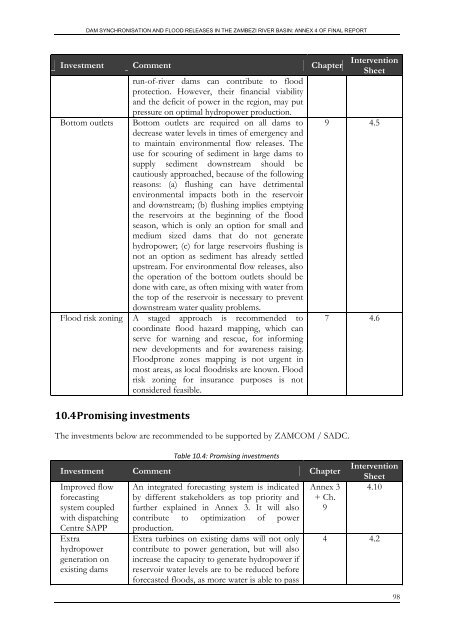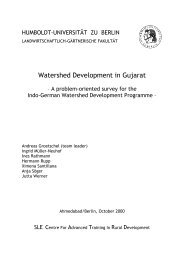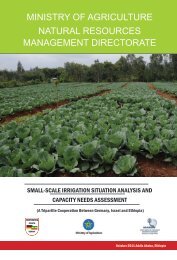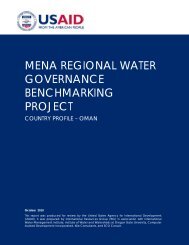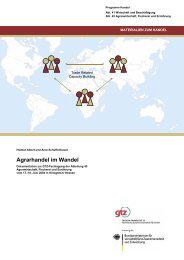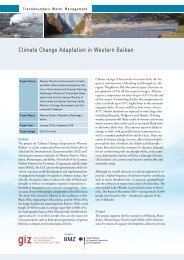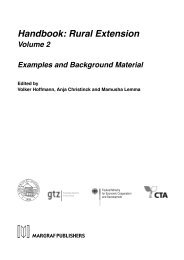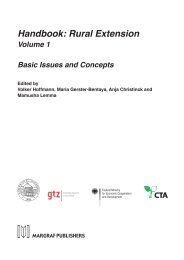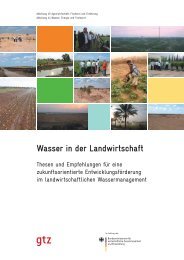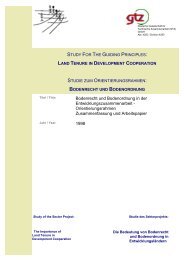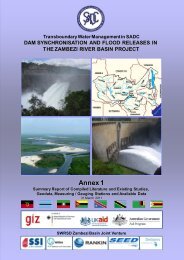Dam Synchronisation and Flood Releases - agriwaterpedia.info
Dam Synchronisation and Flood Releases - agriwaterpedia.info
Dam Synchronisation and Flood Releases - agriwaterpedia.info
Create successful ePaper yourself
Turn your PDF publications into a flip-book with our unique Google optimized e-Paper software.
DAM SYNCHRONISATION AND FLOOD RELEASES IN THE ZAMBEZI RIVER BASIN: ANNEX 4 OF FINAL REPORT<br />
Investment Comment Chapter<br />
run-of-river dams can contribute to flood<br />
protection. However, their financial viability<br />
<strong>and</strong> the deficit of power in the region, may put<br />
pressure on optimal hydropower production.<br />
Bottom outlets Bottom outlets are required on all dams to<br />
decrease water levels in times of emergency <strong>and</strong><br />
to maintain environmental flow releases. The<br />
use for scouring of sediment in large dams to<br />
supply sediment downstream should be<br />
cautiously approached, because of the following<br />
reasons: (a) flushing can have detrimental<br />
environmental impacts both in the reservoir<br />
<strong>and</strong> downstream; (b) flushing implies emptying<br />
the reservoirs at the beginning of the flood<br />
season, which is only an option for small <strong>and</strong><br />
medium sized dams that do not generate<br />
hydropower; (c) for large reservoirs flushing is<br />
not an option as sediment has already settled<br />
upstream. For environmental flow releases, also<br />
the operation of the bottom outlets should be<br />
done with care, as often mixing with water from<br />
the top of the reservoir is necessary to prevent<br />
downstream water quality problems.<br />
<strong>Flood</strong> risk zoning A staged approach is recommended to<br />
coordinate flood hazard mapping, which can<br />
serve for warning <strong>and</strong> rescue, for <strong>info</strong>rming<br />
new developments <strong>and</strong> for awareness raising.<br />
<strong>Flood</strong>prone zones mapping is not urgent in<br />
most areas, as local floodrisks are known. <strong>Flood</strong><br />
risk zoning for insurance purposes is not<br />
considered feasible.<br />
10.4 Promising investments<br />
The investments below are recommended to be supported by ZAMCOM / SADC.<br />
Table 10.4: Promising investments<br />
Investment Comment Chapter<br />
Improved flow<br />
forecasting<br />
system coupled<br />
with dispatching<br />
Centre SAPP<br />
Extra<br />
hydropower<br />
generation on<br />
existing dams<br />
An integrated forecasting system is indicated<br />
by different stakeholders as top priority <strong>and</strong><br />
further explained in Annex 3. It will also<br />
contribute to optimization of power<br />
production.<br />
Extra turbines on existing dams will not only<br />
contribute to power generation, but will also<br />
increase the capacity to generate hydropower if<br />
reservoir water levels are to be reduced before<br />
forecasted floods, as more water is able to pass<br />
Intervention<br />
Sheet<br />
9 4.5<br />
7 4.6<br />
Annex 3<br />
+ Ch.<br />
9<br />
Intervention<br />
Sheet<br />
4.10<br />
4 4.2<br />
98


